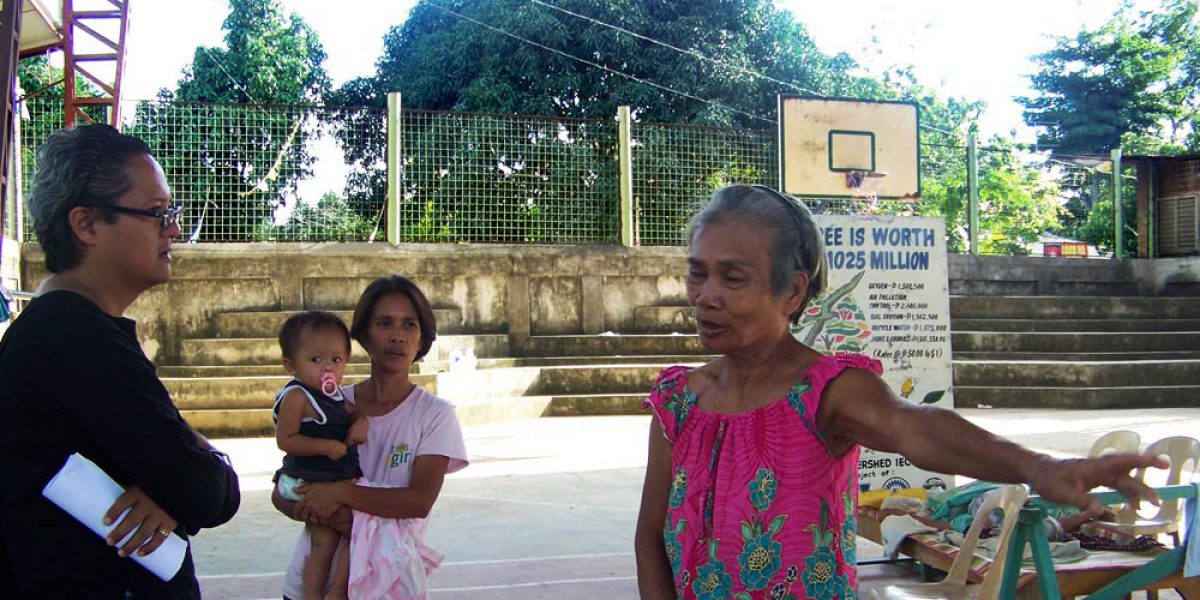Philippines: flash flood kills thousands
28 December 2011|Louie Bacomo

Mindanao, 28 December 2011 – More than 380,000 people are suffering from floods wrought by storm ‘Sendong’ in the southeast of the Philippines.
“My wife and I clung to a tree as we watched a big log sweep our house away”, said Rolando Wabe when JRS visited him in Barangay Canitoan evacuation centre.
About 100 families have also taken refuge here and had to sleep on the steps of the basketball court as the floor is covered with mud.
“People here have experienced flooding before. This year, however, the water rose so quickly that people didn’t have the time they’d had in the past to evacuate their houses”, said the village chief.
“My husband and I were asleep. I woke up to use the toilet but when I came back to the room, water had reached our bed”, relates another woman.
The flashflood came like a thief in the night engulfing houses and villages along the river and sweeping all into the sea. More than a thousand have died with another thousand more missing. Some bodies were found floating along the islands further up the northern coast of Mindanao. In Cagayan de Oro, unclaimed bodies were buried as the stench became unbearable and contamination a risk. A week after the disaster, there is still no running water in the city.
Local groups such as the Jesuit institution, Xavier University, have delivered relief services to different sites with the help of volunteer students and staff; approximately 500 people are being hosted on campus grounds. The Office of Civil Defense (OCD) and international agencies are also organising their responses.
“We need to coordinate our efforts. There is a lot of goodwill but we have to ensure we’re able to respond to all”, said Ermin Pimentel, Xavier University Director of Social Involvement Office which is leading coordination activities with the Church and NGOs. Archbishop Antonio Ledesma SJ of Cagayan de Oro has also called on groups to work together.
Immediate concerns
President Aquino has declared a state of national calamity after his visit to Cagayan de Oro and Iligan, two cities heavily hit by the disaster. He issued a strong call to rebuild houses in safe places. Disaster preparedness is an on-going concern in the typhoon-prone country highlighted by the passage of the National Disaster Risk Reduction and Management Act last year.
“We want to relocate to a safer place”, pleaded a woman whose home had been totally washed away in Iponan, another barangay (village) outside the city, and is now staying on Church grounds.
“This happened to us during the floods in 2009. I fear for my family’s safety and can’t sleep anymore every time it rains”, she continued.
Shelter is certainly an immediate concern for the survivors even as drinking water and food is growing scarce. In Pagatpat, most of the evacuees have left the evacuation centre to live with relatives or clean their houses.
“People don’t want to spend Christmas in the evacuation centre. While it’s good here because they can get food from visiting groups, they have asked if they could be assisted in building temporary shelters”, added the village chief.
It will take more time for this wish to happen as finding a suitable relocation site is a contentious issue. In the meantime, the survivors will have to spend Christmas without a home, not unlike the Child born in a stable on that first night.
Louie Bacomo, JRS Asia Pacific Assistant Regional Director


